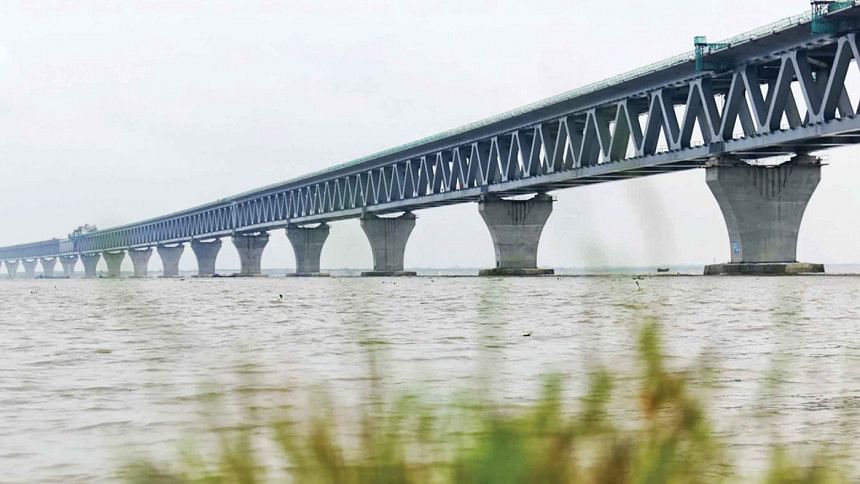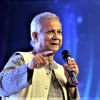What does Padma Bridge mean to a southerner?

The need for a bridge over the mighty Padma River may not have been felt so dearly by people other than those who have been born and bred in the southwestern part of Bangladesh. The Padma has been a major stumbling block for the people of the relatively underdeveloped southern region, in terms of communication and trade, as the turbulent river literally isolated the entire region from the rest of the country – including the capital, Dhaka.
As someone with a root in one of the southern districts, I have been a witness to the innumerable miseries that people have been enduring while crossing the river. From getting stuck in tailbacks at the ferry terminals to the agonising wait for boarding ferries or launches – many of which are in dilapidated conditions – and the risks involved in travelling by launches by navigating the strong current of the river, the journey of millions of people from the 21 southwestern districts to and from Dhaka has always been strenuous and perilous. And the suffering compounds ahead of any festival like Eid or during natural calamities.
I have been commuting to and from the capital quite regularly since mid-1999, when I came to Dhaka to pursue my higher studies. At that time, the long-haul buses would come to Dhaka either via Daulatdia-Paturia route or Mawa-Kawrakandi route. And every time before I took a trip back to my home and before I returned to Dhaka, I used to shudder at the thought of getting stuck in a tailback at the ferry ghat at Daulatdia of Rajbari and taking the long ferry journey. In fact, my first ever experience on the Padma River was terrible and tedious. I can still remember the day when our bus, after being stuck at the ghat for two hours, boarded a seemingly decades-old larger ferry, popularly known as a ro-ro ferry. The weather was gloomy, with strong currents disrupting the normal ferry services. It took us more than three hours to reach Aricha ghat. At that time, ferries and launches used to follow the Daulatdia-Aricha route for crossing the river – a route that would take more than two hours to complete by ferries. When it came to trucks loaded with non-perishable goods, the situation got quite horrible as they had to wait for two to three days at the ghat to cross the river on a ferry.
But it was around that time that I, like millions of people in my region, started dreaming of a "Padma Bridge," as a bridge across the mighty Padma had already been in talks. The idea gained momentum after the construction of the Bangabandhu Multipurpose Bridge (which was opened for the public in June 1998) over the Jamuna, ushering in new hope and optimism among the people of the southwestern region. I can remember the chitchat of fellow passengers desperately yearning for a bridge over the Padma when we would get stuck at the ferry ghats on our way home or to Dhaka. We saw our collective dream slowly taking a shape in the following years when the newspapers and television channels reported primary measures like the feasibility study being finalised for building a bridge. And in 2007, the people of the southern region were elated to see the government approving the Padma Multipurpose Bridge Project to be built with donor assistance.
However, in September 2011, our dream faced a severe blow when the lead donor, the World Bank, suspended its promised USD 1.2 billion in loans over allegations of corruption conspiracy, which the government denied. Other financiers, like Asian Development Bank (ADB) and Japan International Cooperation Agency (Jica), also cancelled their loan proposals, leading to the billion-dollar project being stalled for some time.
Although the allegations against the government officials were later found to be untrue by the Anti-Corruption Commission and a Dhaka court, we were heartbroken and prayed that the endeavour of building the bridge would succeed. Then, in 2012, we saw a revival of our dream when Prime Minister Sheikh Hasina made her bold announcement to go ahead with the implementation of the project using the country's own funds. Hope was rekindled among the southern people. And when the prime minister inaugurated the main construction work of the country's most challenging engineering project in December 2015, we realised our dream was inching closer to reality. As the construction work progressed – with tonnes of steels and rocks piled up on both banks and gigantic cranes installing spans – we, the southern people, and the entire nation, started waiting with bated breath for the glorious moment. Today is the day when our dreams come true as Prime Minister Sheikh Hasina inaugurates the Padma Bridge.
From tomorrow, the agonies of crossing the Padma River only by ferries or launches would come to an end. From tomorrow, a new chapter is expected to begin in the lives of the people of the southern region as the bridge will enhance connectivity, facilitate transportation of agri-products, and play a significant role in boosting trade and commerce in the region. The impacts that the 6.15km Padma Bridge is going to have on the communication system and the economy have widely been discussed with economists, projecting a growth of the GDP by 1.2 percent.
Of course, the economic benefits of the bridge can only be attained to its potential if it is considered as an economic corridor instead of a mere means of connectivity. For that, the government needs to build infrastructures like special economic zones and industrial parks so that a wide range of industries can be developed, which will create employment opportunities. As a native of the region, the inauguration of the bridge will be a moment of pride for me, and the bridge itself is something I feel emotionally attached to. It will be a dream come true for the people of the southern region. Yet, I believe, the real benefits of the Padma Bridge will be brought about when the government puts the supporting investments and policies in place.
Wasim Bin Habib is deputy planning editor at The Daily Star.

 For all latest news, follow The Daily Star's Google News channel.
For all latest news, follow The Daily Star's Google News channel. 






Comments